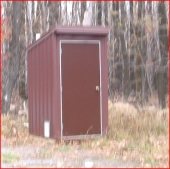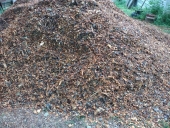Nick Herzing wrote:Well now I am all confused. If this list for just wood dust (like from sanding), or for the wood themselves. I have never heard of ash, maple, or birch (just a few that caught my eye) having ANY health concerns when used for, say, wooden cooking utensils. Is this list overprotective or am I ignorant of the dangers of wood?
It would suggest to me that these trees should not be eaten

One of the reasons cedar lasts so long is because it is toxic... on the other hand some friends lived in a complex that tried cedar mulch as a ground liner in a play area... until the children all came home with red, swollen feet and they removed it. Trees create toxins so bugs won't eat them. What is interesting is that cedar leaves (which still don't taste good) are ok to eat. Dust of any kind, toxic or not, is not good to breath anyway. Allergies are by definition "unnatural" sensitivities to things and so the odd person who gets red from touching a kind of wood does not make that wood bad. Wood does off gas and some people are more sensitive to some woods than others (pine gets a lot of people).
So, wood used in the round is most healthy. The next best is split wood. Then sawn wood. Finally sanded wood. Generally they all get sealed with handling as our skin oils coat the outside and soak in. Someone long ago figured out this could be sped up by oiling the wood as we still do today.
There are parts of trees that have been traditionally used for eating and clothing. Most often the inner bark (pine for example) might be eaten. The northwest people used the inner bark from cedar trees to make thread/cord/yarn which they made clothing and blankets with. This part of the tree seems to be less toxic. That is why wood is debarked before drying, because the bark will start and harbour rot. (Bark also collects water)
The toxicity of the wood is what makes the tree useful to us. It is what makes the tree able to grow tall and what gives the wood strength for us to build with. The tree is it's own building system made of many parts. It is also a part of the local plant and animal systems and is designed to work within that framework. It is also designed to release these toxins relatively quickly after it falls so it can rot. Even cedar which in air can keep it's toxic qualities for years will rot quicker if left where it falls. We interrupt a trees designed purpose and try to keep it in the state that is most useful to us for as long as possible. Most of us don't think in these terms because the tree cooperates so well and easily. Nature is never in a hurry.











